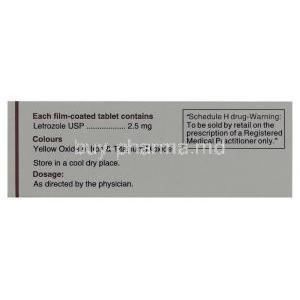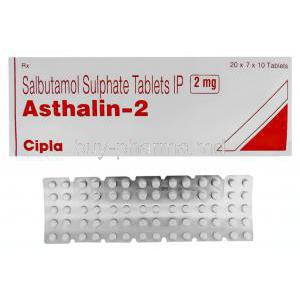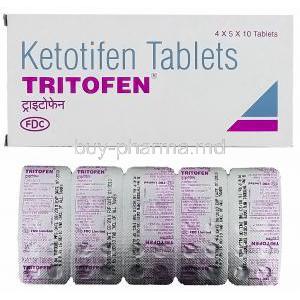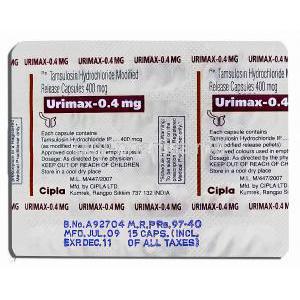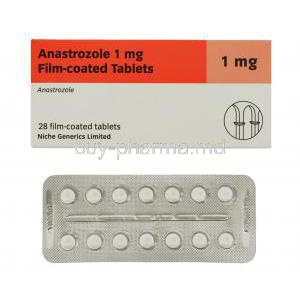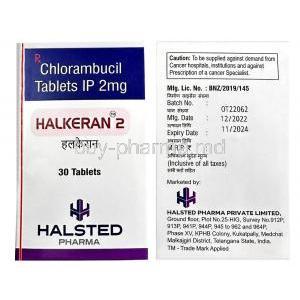1. Introduction to Fempro (Letrozole)
Overview of Fempro and Its Role in Hormone-Related Therapy
Fempro, containing the active ingredient Letrozole, is a potent nonsteroidal aromatase inhibitor used primarily in the management of hormone-dependent breast cancer. By targeting the biosynthesis of estrogen, it serves as a cornerstone in the treatment of hormone receptor-positive malignancies, particularly in postmenopausal women. Its introduction has redefined the therapeutic landscape of endocrine oncology, offering a safer and more effective alternative to earlier hormonal treatments.
Classification: Aromatase Inhibitor and Pharmacological Background
Letrozole belongs to the pharmacological class known as aromatase inhibitors, a group of agents that suppress the conversion of androgens into estrogens by inhibiting the aromatase enzyme complex. This action significantly reduces circulating estrogen levels, thereby halting the growth of estrogen-dependent tumor cells. Unlike selective estrogen receptor modulators, Letrozole does not exhibit estrogen agonist activity, allowing for more precise endocrine suppression.
Brief History of Letrozole Development and Approval
Developed during the late 1980s and approved by the U.S. FDA in 1997, Letrozole represented a new generation of targeted hormonal therapy. Over the years, it has become an integral part of adjuvant and extended adjuvant treatment regimens, gaining international recognition for its clinical efficacy and tolerability.
Therapeutic Importance in Hormone-Sensitive Conditions
Beyond its oncologic applications, Fempro has demonstrated value in various conditions driven by estrogen imbalance. It is utilized in reproductive medicine and metabolic research, highlighting its versatility in modulating endocrine pathways.
2. Composition and Formulation
Active Ingredient: Each Fempro tablet contains Letrozole as the principal active component.
Available Strengths: Commonly supplied in 2.5 mg tablets, optimized for daily oral administration.
Inactive Ingredients: Includes excipients such as lactose monohydrate, cellulose, maize starch, and magnesium stearate to ensure stability and absorption consistency.
Manufacturer: Produced by Cipla Ltd., Fempro is a globally recognized brand trusted in oncological and reproductive therapeutics.
3. Mechanism of Action (How Fempro Works)
Inhibition of Aromatase Enzyme and Estrogen Synthesis Reduction
Fempro acts by selectively binding to and inhibiting the cytochrome P450 aromatase enzyme, effectively blocking the peripheral conversion of androgens into estrogens. This leads to a profound reduction in estrogen concentrations, depriving hormone-sensitive cancer cells of their proliferative stimulus.
Effect on Estrogen-Dependent Cancer Cell Proliferation
By suppressing estrogen availability, Fempro disrupts the cellular signaling pathways responsible for tumor cell division, resulting in slowed tumor progression and, in many cases, tumor regression.
Comparison with Other Aromatase Inhibitors
Compared with anastrozole and exemestane, Letrozole exhibits a slightly stronger suppression of circulating estrogen levels. It is also characterized by high bioavailability and minimal off-target activity, making it a preferred option for long-term management.
Hormonal Feedback Mechanisms and Systemic Effects
The reduction in estrogen may trigger compensatory hormonal feedback through the hypothalamic-pituitary-gonadal axis, influencing other endocrine functions such as bone metabolism and lipid regulation.
4. Therapeutic Uses of Fempro
4.1 Approved Medical Uses
- Treatment of Hormone Receptor-Positive Breast Cancer: Indicated in postmenopausal women as a primary or adjunct therapy.
- Adjuvant Therapy: Used following tamoxifen to reduce recurrence risk in early-stage breast cancer.
- First-Line Therapy for Advanced or Metastatic Disease: Effective in delaying progression in metastatic hormone-dependent breast cancer.
- Extended Adjuvant Therapy: Administered after five years of prior endocrine therapy to maintain remission.
4.2 Off-Label and Investigational Uses
- Ovulation Induction: Used in anovulatory women, particularly those with polycystic ovary syndrome (PCOS), as an alternative to clomiphene citrate.
- Endometriosis Management: Helps reduce estrogen-mediated endometrial proliferation.
- Gynecomastia in Men: Reduces estrogen levels contributing to male breast tissue enlargement.
- Hormonal Modulation in Transmasculine Individuals: Applied in gender-affirming care to reduce estrogenic influence.
- Experimental Uses: Ongoing research explores potential roles in bone health and age-related endocrine disorders.
5. Dosage and Administration
The standard recommended dosage for breast cancer treatment is 2.5 mg once daily, with or without food. Treatment duration may vary from months to years depending on therapeutic goals and clinical response.
- For fertility treatment: Short courses (2.5–5 mg daily for 5 days) beginning on day 3 or 5 of the menstrual cycle.
- Missed Dose: Take as soon as remembered unless it is almost time for the next dose; never double up.
- Therapeutic Switching: Can be transitioned from tamoxifen or combined sequentially as part of extended therapy protocols.
6. Pharmacokinetics and Pharmacodynamics
Letrozole is rapidly absorbed following oral administration, achieving peak plasma concentration within one hour. Its bioavailability exceeds 95%, unaffected by food intake. The compound is extensively metabolized in the liver via CYP3A4 and CYP2A6, producing pharmacologically inactive metabolites excreted renally.
Half-life averages 48 hours, allowing for steady plasma levels with daily dosing. The pharmacodynamic effect manifests as over 95% suppression of circulating estrogen within 2–3 days of therapy initiation.
7. Side Effects of Fempro
7.1 Common Side Effects
- Hot flashes and night sweats
- Arthralgia or musculoskeletal discomfort
- Fatigue and mild lethargy
- Nausea, dizziness, or headache
- Occasional weight gain and mood fluctuations
7.2 Serious or Rare Adverse Reactions
- Progressive bone mineral loss leading to osteoporosis
- Cardiovascular changes including hypertension and dyslipidemia
- Hepatic enzyme elevation and rare hepatotoxicity
- Severe mood disturbances or depressive episodes
8. Drug Interactions
Concomitant use with estrogen-containing medications diminishes therapeutic efficacy. Tamoxifen co-administration is not recommended due to pharmacologic antagonism. Potent CYP450 enzyme inducers such as phenytoin or rifampicin may accelerate Letrozole metabolism, reducing plasma concentration. Alcohol should be limited, as hepatic burden may intensify side effects.
9. Warnings and Precautions
- Confirm postmenopausal status before therapy initiation.
- Monitor bone density periodically; consider bisphosphonate prophylaxis if indicated.
- Assess lipid profile and liver function tests during prolonged use.
- Avoid concurrent hormone replacement therapy or estrogenic supplements.
10. Contraindications
- Known hypersensitivity to Letrozole or any excipient in Fempro.
- Premenopausal women, pregnant or lactating individuals.
- Severe hepatic impairment or advanced cirrhosis.
Fempro remains an indispensable pharmacologic tool in the management of hormone-driven malignancies and reproductive endocrine disorders. Its clinical utility, supported by decades of research, continues to shape modern endocrine oncology and reproductive medicine.
11. Careful Administration and Important Precautions
Monitoring Bone Mineral Density
Long-term administration of Fempro necessitates periodic evaluation of bone mineral density (BMD). The reduction of estrogen levels induced by Letrozole can accelerate bone resorption, predisposing patients to osteoporosis and fractures. Physicians often recommend baseline and follow-up dual-energy X-ray absorptiometry (DEXA) scans to track skeletal integrity. Supplementation with calcium and vitamin D, alongside weight-bearing exercises, can help mitigate bone loss.
Periodic Evaluation of Cardiovascular and Metabolic Parameters
Chronic suppression of estrogen can influence lipid metabolism and vascular tone. Regular monitoring of blood pressure, lipid profile, and fasting glucose is prudent. In patients with preexisting cardiovascular disease or hyperlipidemia, periodic reassessment is essential to minimize risks of atherosclerosis and cardiac dysfunction.
Need for Contraception in Women of Childbearing Potential
Although Fempro is intended for postmenopausal women, inadvertent use in premenopausal patients warrants caution. Effective contraception is mandatory during and after therapy due to potential teratogenicity. Letrozole interferes with embryonic development, making its use in women of childbearing potential strictly contraindicated without confirmed menopausal status.
Guidance for Long-Term Therapy and Follow-Up
Extended endocrine therapy requires vigilant medical oversight. Patients should undergo periodic evaluations of hepatic function, lipid profile, and skeletal health. Continuation beyond five years should be individualized based on relapse risk, tolerance, and clinical outcomes.
12. Administration in Special Populations
12.1 Administration to Elderly Patients
Letrozole is generally well-tolerated among geriatric patients. However, age-related hepatic or renal impairment can alter drug clearance, necessitating cautious dose adjustment. Enhanced vigilance for musculoskeletal symptoms and osteoporosis is advised, as elderly individuals are predisposed to bone fragility.
- Monitor hepatic enzyme levels periodically.
- Assess BMD annually to prevent skeletal complications.
- Maintain hydration and adequate nutritional intake to support metabolic stability.
12.2 Administration to Pregnant and Nursing Women
Fempro is absolutely contraindicated in pregnancy. Letrozole may cause severe embryotoxic and teratogenic effects due to suppression of maternal estrogen synthesis. Animal studies have demonstrated skeletal malformations, embryonic loss, and growth retardation. Exposure during pregnancy demands immediate medical intervention.
During lactation, Letrozole is excreted in trace amounts in breast milk, posing potential harm to the infant. Its use is therefore prohibited in nursing mothers. Alternative treatment options should be considered for patients requiring hormonal modulation while breastfeeding.
12.3 Administration to Children and Adolescents
The safety and efficacy of Letrozole in pediatric populations remain unestablished. While limited trials have explored its utility in disorders of puberty and short stature, evidence is insufficient to recommend routine pediatric use. Off-label application in pediatric endocrinology must only occur under specialized supervision within controlled clinical settings.
13. Overdosage and Emergency Management
Signs and Symptoms of Overdose
Overdosage of Fempro may manifest as severe dizziness, flushing, nausea, vomiting, or profound fatigue. Rarely, neurological symptoms such as confusion or tremors can occur. Prolonged or excessive intake increases the risk of hepatic strain and musculoskeletal pain due to profound estrogen depletion.
Supportive Care and Symptom Management
There is no known antidote for Letrozole overdose. Management is entirely supportive, focusing on maintaining vital functions and symptomatic control. Activated charcoal may be administered if ingestion is recent. Monitoring of liver enzymes and electrolyte balance is recommended throughout the recovery phase.
No Specific Antidote Available
Because Letrozole does not exhibit reversible receptor binding, the body must metabolize the compound naturally. In all cases of overdose, hospitalization for observation is advised, particularly in patients with hepatic or renal compromise.
14. Handling and Storage Precautions
Proper Storage Conditions
Fempro tablets should be stored at room temperature, ideally between 15°C and 30°C. Protect from excessive humidity, direct sunlight, and heat sources. Avoid refrigeration unless specifically instructed by the manufacturer.
Safe Disposal of Unused or Expired Medication
Expired or unused Letrozole should be disposed of following local pharmaceutical waste protocols. Do not discard tablets in household waste or wastewater systems. Pharmacies or healthcare facilities often provide take-back programs to ensure safe and eco-friendly disposal.
Handling Instructions for Caregivers and Healthcare Providers
Caregivers handling Fempro should wash hands before and after contact. Pregnant or breastfeeding caregivers should avoid handling crushed or broken tablets due to potential dermal absorption risks.
15. Clinical Efficacy and Research Overview
Summary of Major Clinical Trials in Breast Cancer
Extensive phase III trials have established Letrozole’s superiority over tamoxifen in reducing recurrence of hormone receptor-positive breast cancer. Studies such as BIG 1-98 demonstrated enhanced disease-free survival and prolonged remission when Letrozole was employed as adjuvant or extended therapy.
Comparative Efficacy vs. Tamoxifen
Letrozole exhibits a more complete suppression of estrogen synthesis compared to tamoxifen, which functions as a selective receptor modulator. Consequently, Fempro offers a lower recurrence rate and superior long-term outcomes in postmenopausal patients, although with a slightly increased risk of bone mineral loss.
Long-Term Survival Benefits and Relapse Prevention
Five- and ten-year follow-up data confirm the sustained advantage of Letrozole in reducing both local and distant recurrence. When continued beyond standard therapy durations, it demonstrates incremental benefits in disease-free survival, underscoring its pivotal role in long-term endocrine management.
16. Patient Counseling Information
Guidance on Adherence and Missed Dose Handling
Adherence to the prescribed schedule is crucial for therapeutic efficacy. Patients should take one tablet daily at the same time each day. If a dose is missed, it should be taken promptly unless the next scheduled dose is imminent. Consistent use helps maintain steady estrogen suppression and optimal treatment outcomes.
Lifestyle Recommendations for Bone and Heart Health
- Engage in regular weight-bearing and resistance exercises.
- Consume a calcium-rich diet supplemented with vitamin D.
- Limit alcohol intake and avoid tobacco products.
- Schedule routine cardiovascular assessments to monitor lipid and blood pressure levels.
Reporting Adverse Effects Promptly
Patients should report persistent or severe side effects such as bone pain, unexplained fatigue, or visual disturbances. Early communication with healthcare professionals facilitates timely intervention and minimizes complications.
Importance of Medical Supervision During Therapy
Continuous medical monitoring ensures the safety and effectiveness of treatment. Regular check-ups enable timely adjustments to therapy, identify emerging adverse effects, and support adherence through education and reassurance. Long-term use should always occur under specialist supervision with individualized treatment planning.




